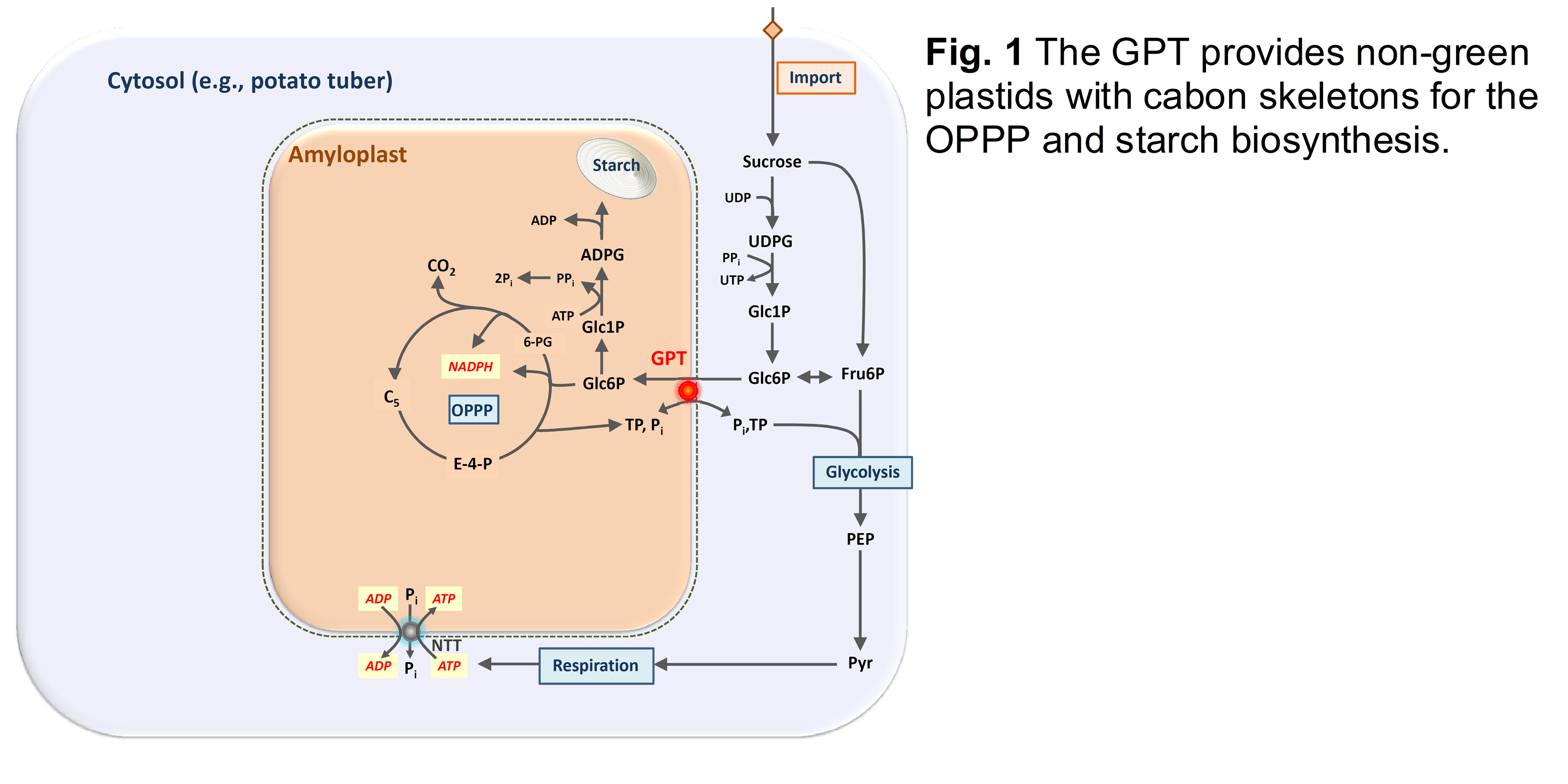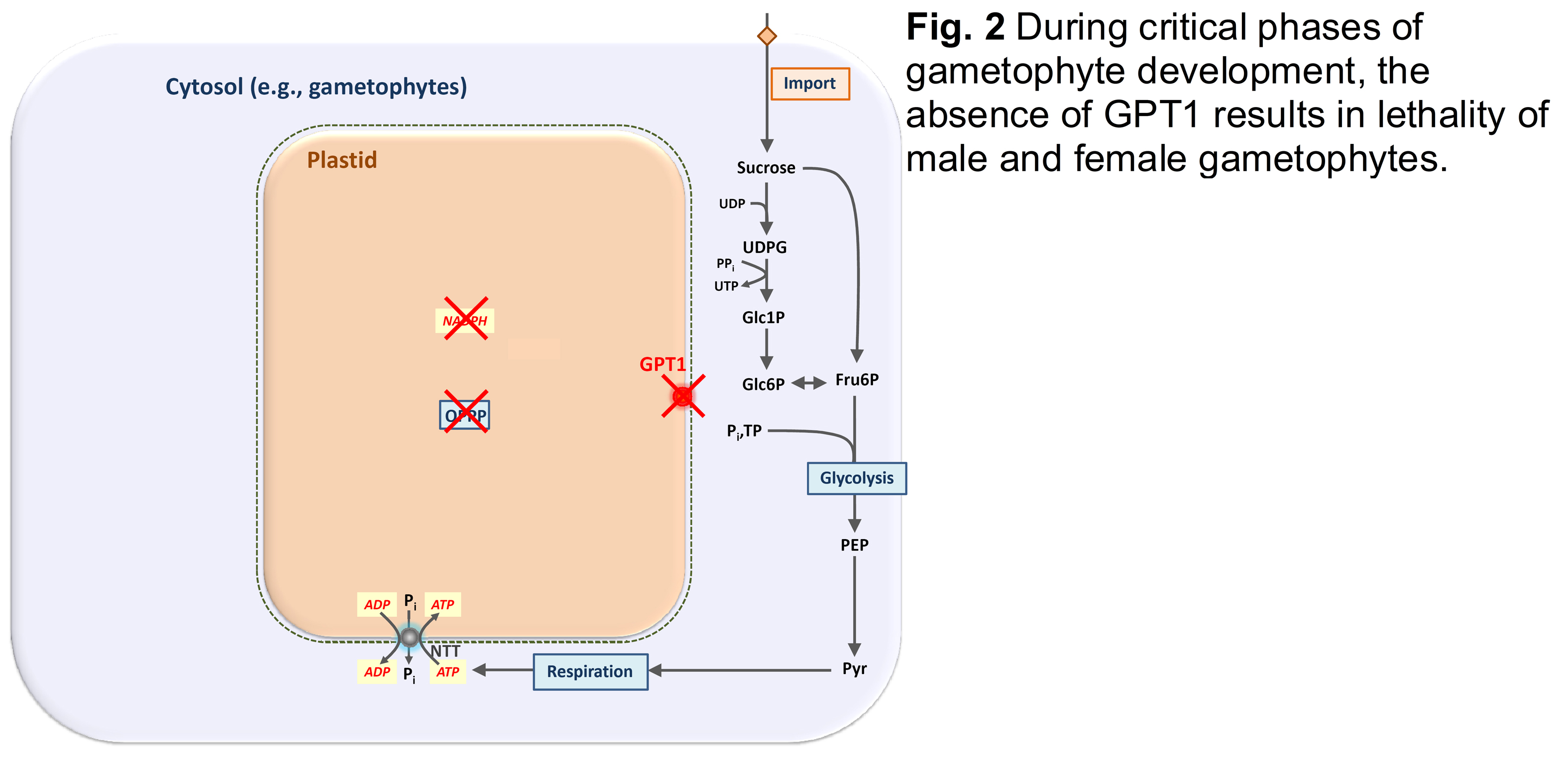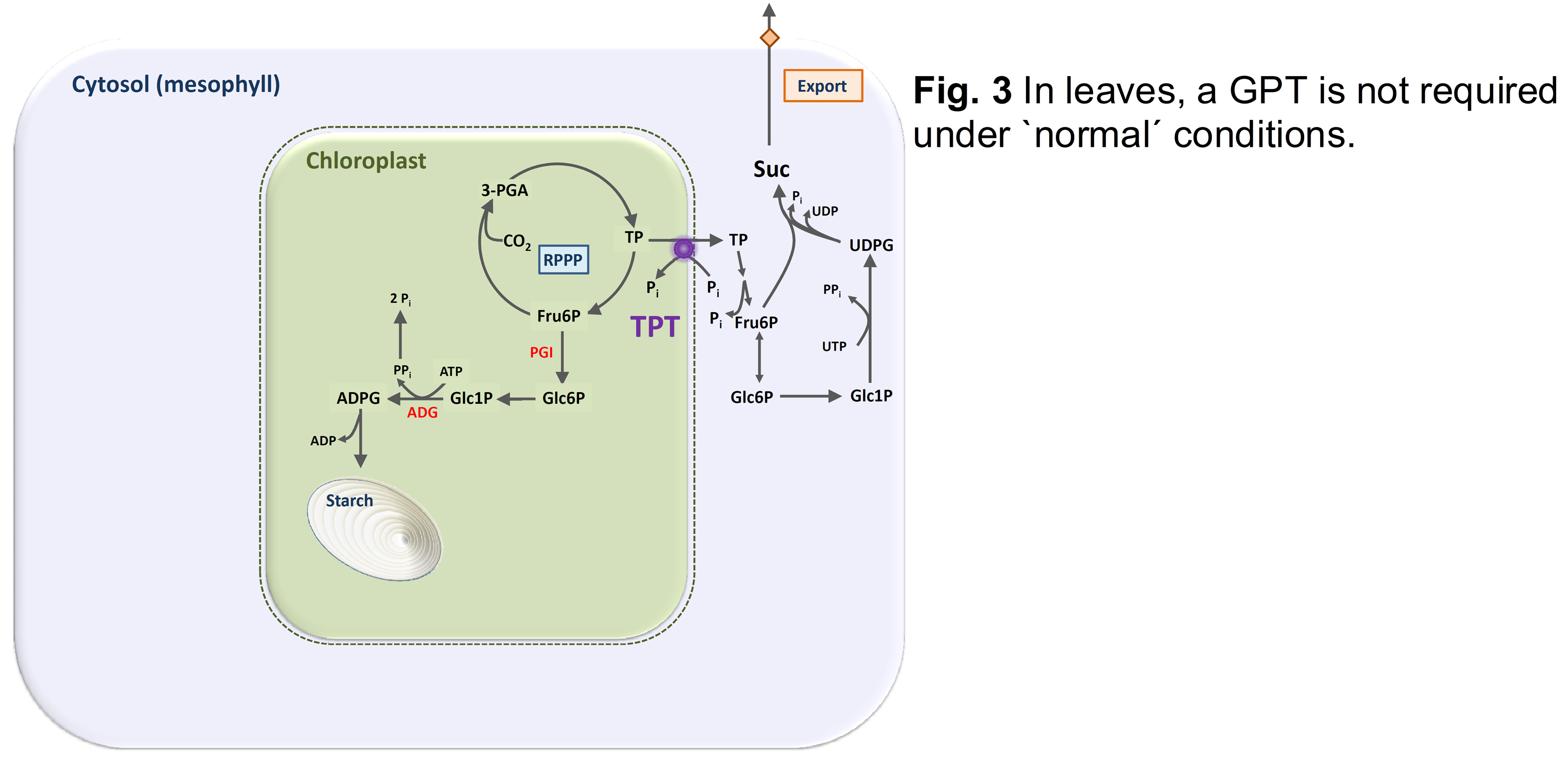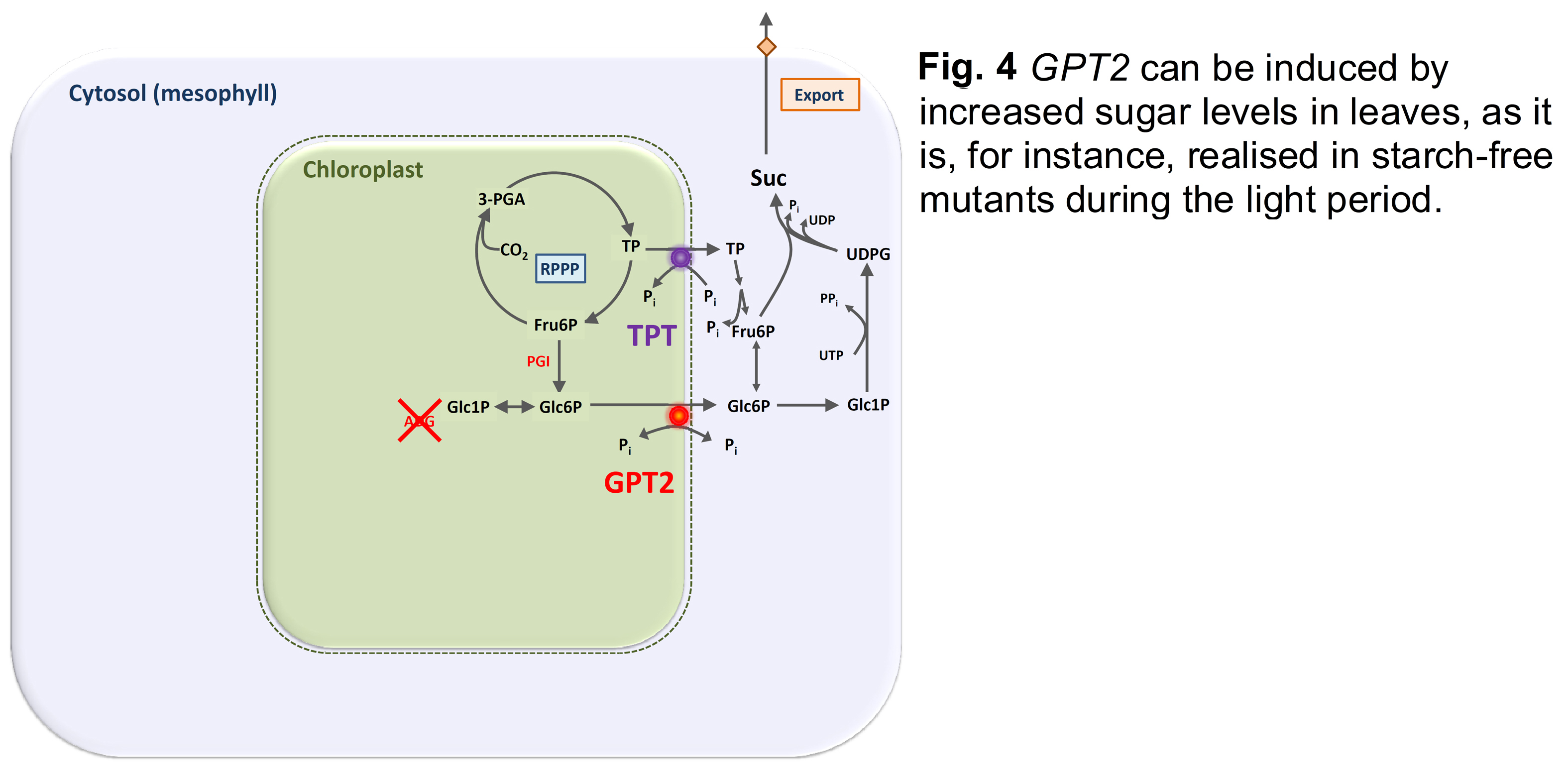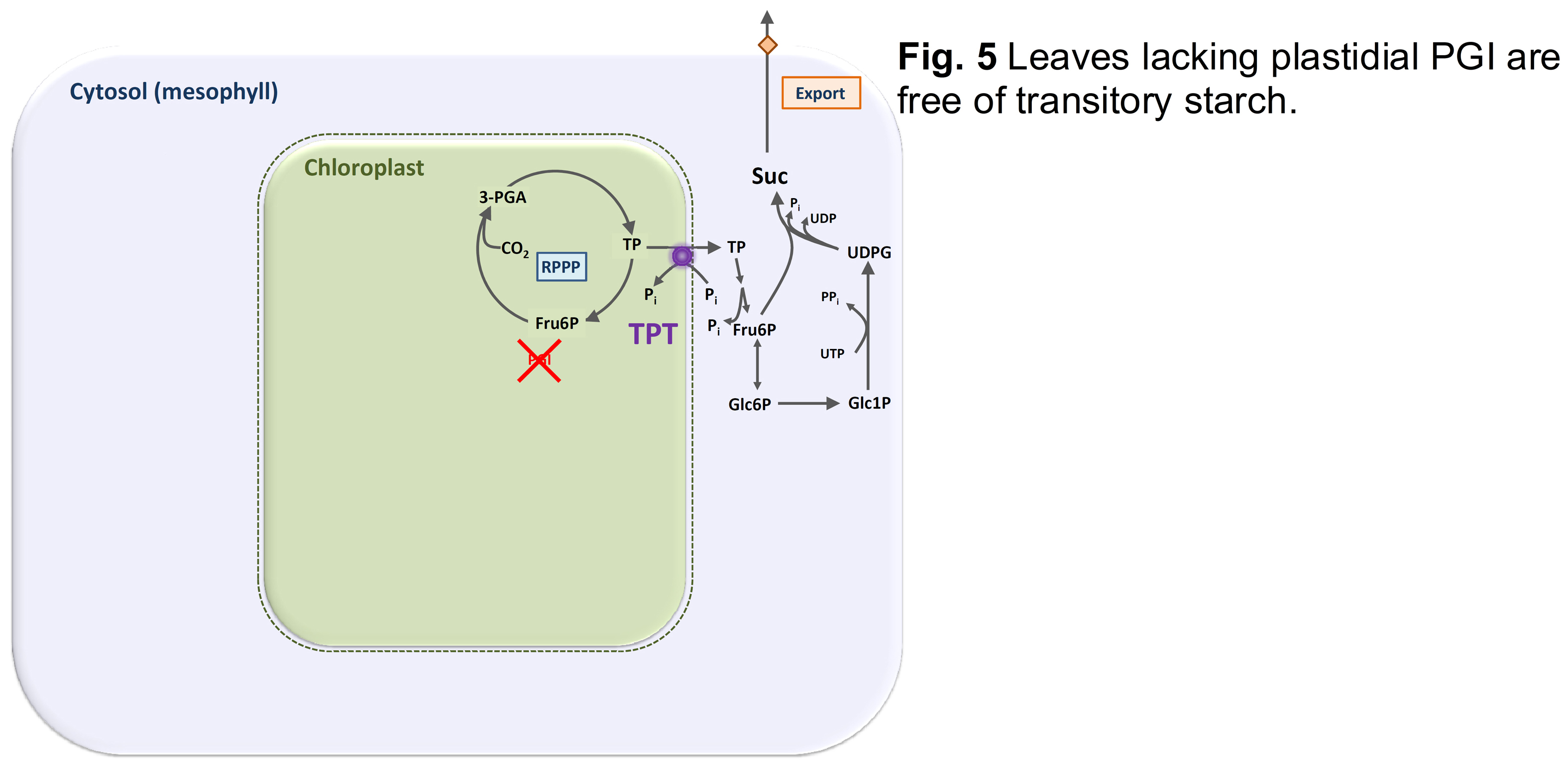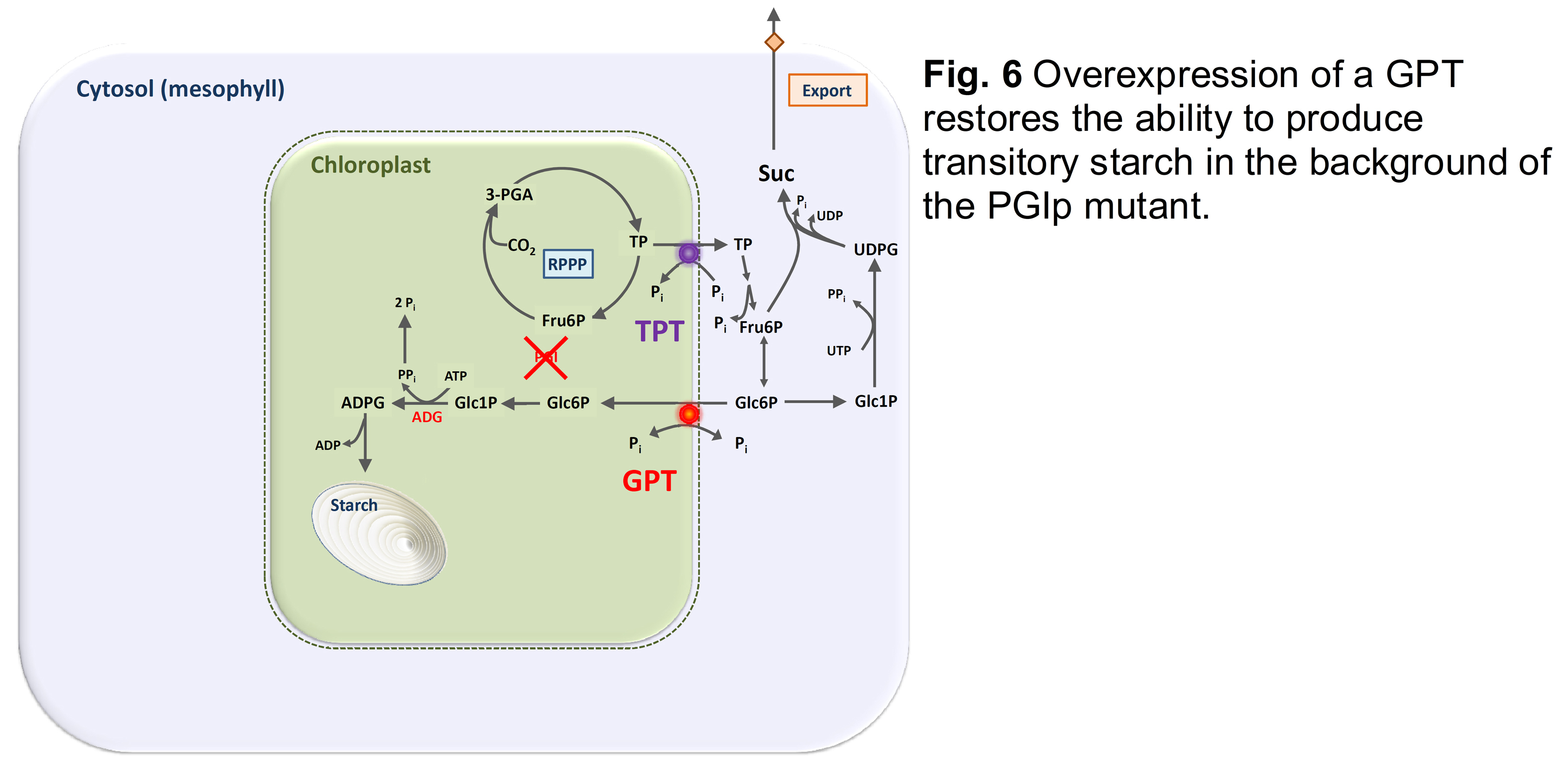Glucose-6-phosphate/phosphate translocator (GPT)
The glucose-6-phosphate (Glc6P)/phosphate translocator (GPT) is usually expressed in heterotrophic tissues and provides plastids (e.g., amyloplasts) with carbon skeletons in form of Glc6P for starch biosynthesis and the oxidative pentose phosphate pathway (OPPP) (Kammerer et al., 1998, Fig. 1). Beside of carbon skeletons non-green plastids require energy in form of ATP, which is delivered by the nucleoside triphosphate translocator (NTT; e.g., Trentmann et al., 2008). Indeed, overexpression of both functions in potato tubers resulted in an increase in tuber yield (Zhang et al., 2008).
The genome of A. thaliana contains two GPT genes (GPT1 and GPT2). In contrast to GPT2, the knockout of GPT1 leads to lethality of male and female gametophytes, most likely because of a deficiency in reducing power in form of NADPH provided by the OPPP (Niewiadomski et al., 2005; Fig. 2). NADPH is essential for numerous anabolic reaction sequences.
Under `normal´ conditions a GPT is not required in chloroplasts (Fig. 3). However, GPT2 expression in leaves is up-regulated as a consequence of increased sugar levels, like in starch-free mutants (Fig. 4). The starch-free leaf phenotype of plastidial PGI mutants (Fig. 5) could be rescued by overexpressing a heterologous GPT (Niewiadomski et al., 2005; Fig. 6). In double mutants defective in PGIp and GPT2, only cells containing the functional GPT1 contain starch (Kunz et al., 2010).
(back to Rainer E. Häusler)
